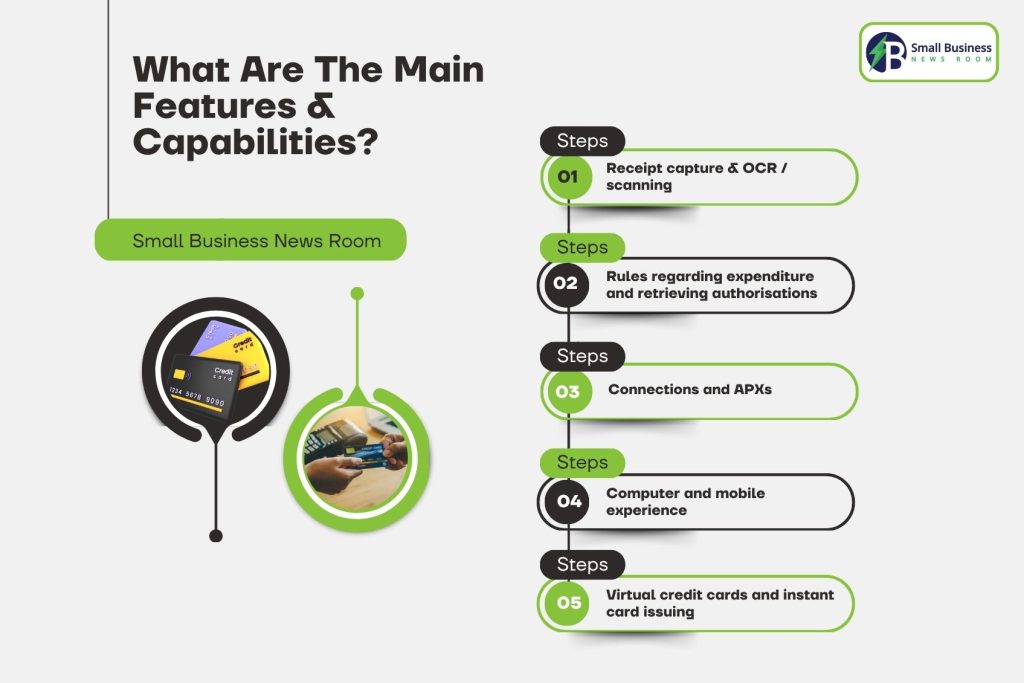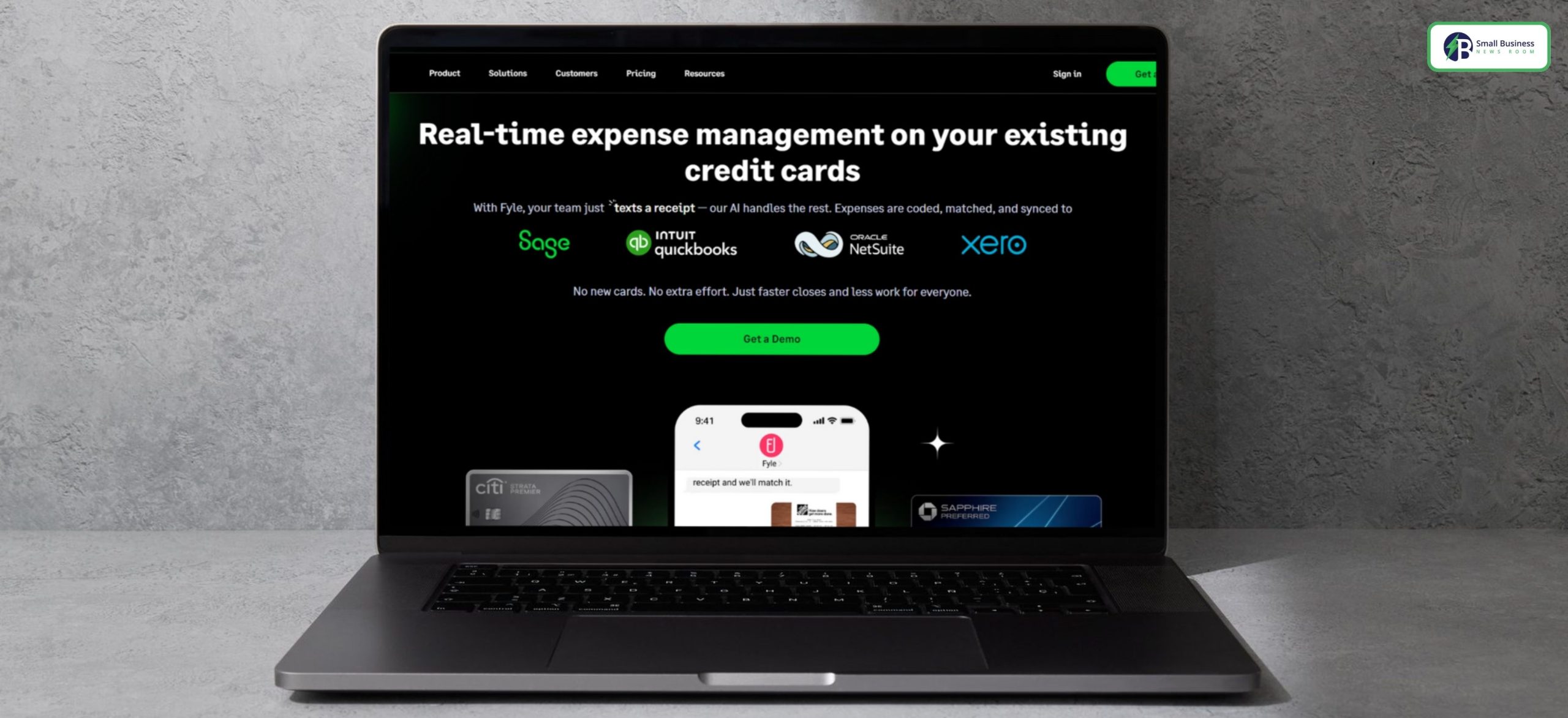Table Of Contents
- What is Fyle?
- Company History And Funding Timeline
- What Is Their Market Position And Target Audience?
- What Are The Main Features & Capabilities?
- Receipt capture & OCR / scanning
- Rules regarding expenditure and retrieving authorisations
- Connections and APXs
- Computer And mobile experience
- Virtual credit cards and instant card issuing
- Analytics, reporting, dashboards
- Fyle in 2025: Sage Purchase & What's on the Horizon
- What's changed (and what hasn't)
- What Is The Future Roadmap & Product Vision?
- Benefits and Weaknesses of Fyle
- Disadvantages You Must Not Ignore!
- Pricing and Plans Of Fyle: What You Need To Know?
- Fyle Competitor Analysis
- Fyle Vs Concur
- Fyle Vs Expensify
- Fyle Vs Local Niche Tools
- Implementation & Best Practices
- Onboarding & rollout recommendations
- Policy design & governance
- Training and managing change
- Data migration, security, compliance
- Let’s Take A Look At The Use Cases Or Customer Stories!
- SME Case: before and after
- Scaling to enterprise use
- NGO/nonprofit use case scenario
- Alternatives & When Fyle May Be Inappropriate
Fyle Review 2025: Prices, Features, Good Points & Bad Points + Buy Sage!
Expense reporting can be a laborious task in businesses. It requires a lot of work, such as gathering receipts, obtaining authorization, and ensuring everything adds up.
That’s where Fyle comes into play. The platform has been renowned as an AI-powered expenses management solution for businesses.
In the year 2025, Sage Group acquired Fyle for $94 million. Other than that, the platform also integrates with different accounting software like QuickBooks and NetSuite!
In this article, I will tell you everything about Fyle, its acquisition, and how exactly it can serve your needs.
What is Fyle?

Fyle is an AI software that makes business expense management effortless and efficient. It’s just one more straightforward idea! It helps with the capture, tracking, approval, and reconciliation of expenses.
Fyle is focused on three aspects:
- Reducing manual work,
- Keeping policies uniform
- Giving real-time spending insights.
Previously, it involved aligning receipts, getting approvers, syncing with accounting systems, and performing similar tasks that took too much time.
Fyle employs automation such as OCR and real-time card feeds. This has been a great integration to ease the way.
Company History And Funding Timeline

Fyle started in 2016. Nevertheless, it is still quite a young one.
The company has been funded externally along the way, grown its engineering and product teams, and increased its customer base.
However, on 28 July 2025, Sage purchased Fyle as a part of its plan to integrate expense automation into small business finance and ERP products. It indicates that the enhancement was a major one rather than a minor increase.
The transaction also led to the rise of expense management as a vital component of finance technology.
What Is Their Market Position And Target Audience?

Fyle is the choice of small and medium businesses, startups in the growth phase, businesses, and finance teams that support field or on-the-go workers.
If you have teams going out of the office, employees working from home, or are facing recurring reimbursement issues, Fyle’s automation can be of great help.
Finance directors and accountants seeking accurate data input in ERPs and accounting systems also find Fyle integrations convenient.
It is not necessarily for enterprises; the features are beneficial for the scale-up teams that desire more control and fewer human errors.
What Are The Main Features & Capabilities?

Let’s go beyond the marketing hype. What actually lives under the bonnet?
Receipt capture & OCR / scanning
One of the largest advantages of Fyle is gathering expense data with little human labor. You can text a photo of a receipt, email, or even a text response.
Fyle will use OCR (optical character) to extract the date, amount, vendor, and the like. It also supports Gmail and Outlook integrations (if you forward or cc). This means fewer problems with typos or missing fields.
It works best when receipts are clean; however, in real life, there are often shadows, folds, and smudges. This means that sometimes you need to make manual adjustments.
Rules regarding expenditure and retrieving authorisations
You establish your rules, such as “meals over ₹2,500 need manager approval” or “no fuel claims over X per km. Based on this, Fyle will automatically flag potential violations.
It enables approval workflows (multi-step), escalation, and validation checks for duplicate or rule-broken claims.
This helps prevent “bad claims slipping through” while also providing users with fast feedback when something is not quite right.
Connections and APXs
One significant reason businesses turn to Fyle is that it does not require you to uninstall your existing accounting system.
It offers two-way integrations with ERPs and accounting programs, including NetSuite, Sage Intacct, QuickBooks, and more.
Fyle serves as the “expense front end,” although the backend system remains the primary source for journal entries.
For the exceptions where native connector coverage is not available, Fyle provides the APIs, the webhooks, and the custom integrations.
It also supports card integrations (corporate credit cards, virtual cards), enabling card transactions to flow in automatically, reducing reconciliation work.
Computer And mobile experience
Fyle has both mobile apps and a website. On mobile, users can upload receipts anytime, answer questions, and finish claims.
There is an offline mode, which means you can take pictures when there is no internet and sync them later.
The website gives managers and finance teams dashboards, settings, and ways to review workflows.
Users often note that the user interface is easy, concise, and not too complicated.
Virtual credit cards and instant card issuing
One appealing aspect of Fyle is that it can interface with any card provider. In the unlikely event that your company issues virtual cards, such as through American Express or other companies.
Fyle can accept those transactions as they occur, match them to receipts, and settle them. This is a very robust live connection.
That is, you don’t have to sit back and wait for a statement and then try and match hundreds of transactions — the software does a lot of tedious work.
Analytics, reporting, dashboards

But beyond just tracking expenses, Fyle provides you with visibility:
- Spend dashboards (by department, category, project),
- Trends over time,
- Exportable reports
- Anomaly detection.
You can slice & dice data to know which teams are getting out of control, where the majority of the spend is occurring, etc. This enables the finance leader to make better decisions.
Also, recent updates allow users to “edit multiple expenses at once” and offer more flexible splitting across dimensions (category, project, cost center) in a single step — a small but meaningful productivity boost.
Fyle in 2025: Sage Purchase & What’s on the Horizon
So, why exactly did Sage buy Fyle?
Sage has always been renowned for providing accounting, payroll, HR, and finance tools for enterprises.
Acquiring Fyle would allow Sage to incorporate a new expense automation method. Small and medium businesses that use Sage can utilize simple expense workflows.
It is all about working better together: when your expense, payroll, and accounting systems work harmoniously, managing finances is no longer about paperwork, but about making sense of the data.
As the press release issued by Sage states, the transaction aims to simplify SMBs’ expense workflows, incorporate AI capabilities, and accelerate Sage’s “office of the CFO” strategy.
What’s changed (and what hasn’t)
Since the takeover is quite recent (July 2025), many core aspects will remain stable. Based on Fyle’s support page, they promise the users that the transition is not as much a disruption, but rather a refresh.
New branding, closer integration with the products of Sage, and more bundled products will be possible.
However, your data, your workflows, permissions, and the like will be unaffected. In the longer term, improvements in automated journal entries in the ERP offered by Sage, further bundling, and shared support are expected.
Pricing, to date, seems solid (no unexpected price increases), and how that fits into the plans with Sage might well change what is the number one priority.
What Is The Future Roadmap & Product Vision?
According to the reports, the users should be able to experience the following in the next 12 to 24 months.
- Even closer integration with the bookkeeping, ERP, and payroll products from Sage. It can be a true “one data model” experience.
- Other AI/ML enhancements include better anomaly detection, smarter policy recommendations, and spending forecasting.
- More nations have broader geographies and compliance with local rules (tax, GST, local regulations).
- Increasing automation in the reconciliations and “auto approve” rules on low-risk cases.
- Additional modular extendability, plug-ins, and marketplace integrations are under the plan of Sage to develop a finance ecosystem.
If Sage were to adopt Fyle as a go-to expense tool, we could look at the tool accelerating very quickly in the next year or two.
Benefits and Weaknesses of Fyle
As with any software, Fyle is not all smooth sailing, and there are some bumps in the road. On the plus side, users appreciate how user-friendly and easy the platform is.
It’s easy on the eye, and that keeps employees whizzing through submitting expenses, even when on the go.
Fyle’s automation is very time-saving, with receipt scanning, OCR, automatic policy checking, and the auto-matching of card transactions.
Another significant plus is how Fyle integrates with other tools; easily linking with, say, QuickBooks, NetSuite, or Sage Intacct means the finance team can spend less time chasing data matches.
Helpful support is often cited as a customer plus, along with regular updates — it’s obvious the team listens.
Disadvantages You Must Not Ignore!
However, there are still some issues. OCR scanning is not foolproof, so illegible receipts may require manual editing.
Some users report issues with deleting or consolidating duplicate expenses, and administrators occasionally find the setup and configuration process somewhat challenging.
The mobile experience is solid, but could be improved when one is offline. Lastly, as your business expands, costs could increase, particularly with increased users.
Fyle is very effective with balancing simplicity, automation, and control. It is suitable for expanding teams that desire smarter expense handling without the heavy features that large enterprises have.
Pricing and Plans Of Fyle: What You Need To Know?
Fyle follows a pay-per-active-user model. This ensures you never pay for users who do not have a card transaction or expense submission.
Here are the openly visible levels today (2025) from Fyle’s website:
Growth: $11.99 per user per month (annual.
Company Business: $14.99 per active user/month. Includes multi-org, advanced approval, multi-currency, etc.
Company: special pricing for 250+ users, including SSO, IP whitelisting, a dedicated account manager, and high-priority support.
*Note: you just need to have a minimum billing requirement (e.g., you need at least 5 users on the Growth plan).
Additional expenses/growth expenses that must not be overlooked!
- There may be fees to set up or initiate advanced integrations.
- Premium support, SSO, and advanced modules can be had as add-ons
- The number of users on the service determines the monthly price.
- Multiple-region/ currency conversion installations may provide exchange or compliance fees.
- Potential training, change management, or consultant cost
Fyle Competitor Analysis
Putting Fyle in context helps to see where it does well and where it may fall short.
Fyle Vs Concur
Concur (from SAP) is a well-established business solution that has robust travel integrations and lots of features.
It is robust but too much for small teams. Fyle is lean, simple, and frequently cheaper for mid-size businesses.
Concur could be a better fit for very large businesses or those with entrenched existing travel systems.
Fyle Vs Expensify
Expensify is also popular, particularly because it is straightforward to use on smartphones. It is suitable for small and medium-sized teams.
Fyle typically outperforms Expensify in terms of better integration with ERP and accounting, and in providing increased flexibility in applying policies.
Fyle Vs Local Niche Tools
Local players (with certain tax/GST, vendor coverage, and payment integrations that are local) can provide a local advantage in terms of compliance or regional coverage.
But these products could be missing scalability, worldwide features, or deep integrations. Fyle emerges victorious when you need a worldwide-ready, scalable product that is supported by robust integrations.
Implementation & Best Practices
Even the best software will fail if rolled out ineffectively. Use these smooth rollout tactics.
Onboarding & rollout recommendations
This includes a pilot with one group (one department) before deploying across the board. You must set realistic time horizons and a buffer for data cleanup.
Also, try to employ actual examples in setup such that users can appreciate relevance. Lastly, track adoption and give reminders or push notifications
Policy design & governance
Don’t reproduce past policies — redesign what type of rules are necessary, infractions that should auto-flag rather than auto-reject. Start policies lean at the beginning and refine later.
Training and managing change
Hands-on labs, cheat sheets, and screencast guides help. Seek user input and rapid iteration. Find the early adopters and champions.
Data migration, security, compliance
Transit existing expense data cleanly (if possible) such that users have a history. Create role-based access, encryption, and audit logs. Consider local regulations (data residency, tax compliance).
Let’s Take A Look At The Use Cases Or Customer Stories!
When people see before/after stories, it crystallizes value.
SME Case: before and after
A 50-person services firm relied on email + spreadsheet to gather receipts. Finance had to chase staff, key in data manually, reconcile monthly, and frequently delay reimbursement by weeks.
After implementing Fyle, they saved 70% on reconciliation hours, completed reimbursements in 7 days, reduced policy violations, and increased staff cheerfulness.
Scaling to enterprise use
An organization with offices dispersed across geographies had standardized expense policies worldwide while maintaining local flexibility.
Fyle’s multi-org, multi-currency setup and comprehensive integrations enabled them to maintain central control while preserving local controls.
NGO/nonprofit use case scenario
A nonprofit with staff working in rural areas used Fyle’s mobile capture and offline features. Even when the internet was weak, staff could take photos of receipts and sync them later.
Real-time dashboards helped leaders see how money was spent in the field, which reduced misuse and surprises.
I was unable to find a well-documented public advocacy NGO case from Fyle’s references, but the adaptable and mobile-first design suits such organizations.
Alternatives & When Fyle May Be Inappropriate
It is acceptable in the vast majority of situations, yet never the very best option. You might desire alternatives in the following cases!
But if you’re a bigger company with sophisticated travel, supplier, or audit needs, then comprehensive suites like Concur or Chrome River will have special modules that can help.
You have a work environment with specific rules related to compliance or taxation that Fyle doesn’t handle very well yet.
You have very tight budgets and absolutely minimal expense volume! A simpler or free tool may suffice.
You need to book travel and bundle expenses all in one place. Some expense tools sync with travel tools, but Fyle is more focused on expenses.
You like one vendor for accounting, expense, and ERP all in one. You don’t want to deal with integrating or adding on to multiple systems. But after the merger, Fyle and Sage may start heading that way.















